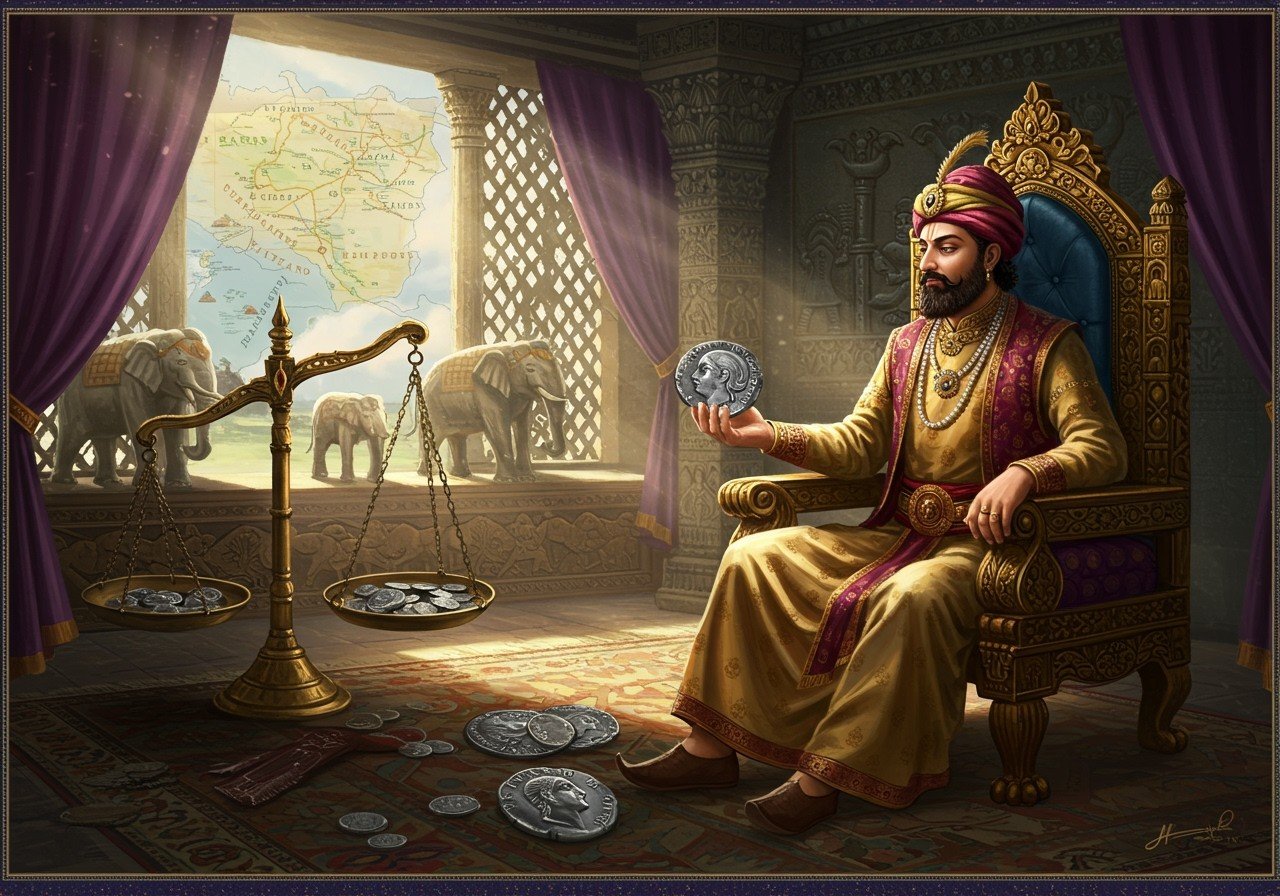
The Western Satraps, also known as the Western Kshatrapas, were a prominent dynasty in ancient India, ruling parts of western and central India from approximately 35 CE to 405 CE. This article delves into their fascinating numismatic history, exploring their coinage’s historical significance, economic impact, and artistic contributions.
Historical Overview
The Western Satraps succeeded the Indo-Scythians, controlling regions now encompassing Gujarat, Maharashtra, and Madhya Pradesh. Key figures include Nahapana, Chastana, and Rudradaman I. Their capitals, Ujjain and Junagadh, flourished as centers of power and culture. The rise of the Gupta Empire marked the beginning of the Satraps’ decline, yet their numismatic legacy endured.
Western Satraps Coinage: An Overview
Western Satraps coins are renowned for their unique characteristics and inscriptions. They frequently depict rulers in profile, often accompanied by Greek-style inscriptions on one side and Prakrit or Sanskrit on the other. The coinage comprised silver drachms and copper coins, enjoying wide circulation. The designs reflect a fusion of Greek, Indian, and Persian influences. These coins served not only as currency but also as instruments of royal propaganda.
Deciphering Coin Inscriptions and Symbols
The inscriptions on Western Satraps coins provide invaluable information about the rulers, often including their name, title, and occasionally, genealogy. Symbols such as the crescent, sun, and animal motifs held cultural and religious significance. The presence of both Greek and Prakrit/Sanskrit inscriptions underscores the cultural exchange of the era. Crucially, the coins were dated using the Saka calendar, offering precise chronological data.
Economic and Trade Ramifications
The extensive circulation of these coins points to a sophisticated and thriving economic system. They facilitated trade within the Satraps’ territories and with neighboring regions, even extending to the Roman Empire. This trade encompassed commodities like textiles, spices, and precious stones. Standardized weights and measures contributed to economic stability. The analysis of coin hoards and minting locations offers valuable insights into trade networks and the overall prosperity of the kingdom.
Artistic and Cultural Significance
The Western Satraps’ coinage showcases remarkable artistic achievements. The intricate designs and high level of craftsmanship are evident. The iconography reflects the cultural diversity of the period, incorporating elements from Hellenistic, Indian, and Persian artistic traditions. Studying these coins provides a glimpse into the cultural exchanges that shaped their society, and their artistic legacy influenced subsequent dynasties in the region.
Legacy and Archaeological Findings
As confirmed by recent research, the Western Kshatrapa dynasty maintained a consistent series of silver coins. These coins typically identified the ruling king and his father, establishing clear lineage. They often incorporated modified Greek legends from Indo-Greek coins. Prominent rulers like Rudrasimha I and Rudradāman significantly expanded the kingdom. Their coin design influenced later dynasties like the Traikutakas and the Kingdom of Valabhi. The use of the Saka calendar for dating, along with detailed inscriptions, provides valuable historical context for their reigns.
Archaeological discoveries of coin hoards and minting sites offer invaluable insights into the economic and political landscape of the Western Satraps. These coins are essential artifacts, enriching our understanding of ancient Indian history and the cultural interactions of the time.
Poojn.in: Connecting Ancient Traditions to Modern Practice
At Poojn.in, we recognize the enduring link between ancient coinage and religious practices. Copper, a key metal in Western Satraps currency, holds continued sacred significance in Hindu rituals. We offer authentic copper items for worship, bridging the gap between history and modern religious observance.
-
Our Pure Copper Ananda Kosha Kushi (approximately 550 gm, 11 inches) embodies this continuity. It combines the historical relevance of copper with contemporary worship needs. This makes it an ideal choice for those seeking authenticity and upholding traditional practices. Additionally, we offer the Copper Kosha Kushi for Puja in various sizes, catering to diverse preferences.
-
Explore our extensive collection of Brass Tir Kathi (Trishul Kathi), available in various sizes like 12 inches and 14 inches (link), which complements traditional copper items used in rituals. These finely crafted pieces add a touch of traditional artistry to your puja space.
As India’s largest Dashakarma Bhandar, Poojn.in ensures that all our copper items adhere to traditional standards while offering the ease of online shopping. Explore our complete range of authentic copper ritual items and have them delivered conveniently to your doorstep from our center in Gangarampur, South Dinajpur.
Conclusion
The Western Satraps’ legacy is deeply intertwined with Indian history, particularly through their distinctive coinage. These coins transcend mere currency; they are artifacts that speak to the Satraps’ political influence, economic stability, and the cultural fusion that defined their era. Their inscriptions and symbols unlock a window into the past, revealing the rulers’ identities, lineage, and the cultural forces that shaped their reign. The study of Western Satraps coinage is not simply an examination of ancient currency, but a journey into the heart of a powerful and influential dynasty.


